In today's digital era, technology companies are constantly seeking innovative ways to stay ahead of the competition. The integration of Data & AI has revolutionized many industries, offering unprecedented opportunities for growth and efficiency. Among these advancements, Retrieval-Augmented Generation (RAG) stands out as a game-changer for content creation and summarization.
RAG combines the strengths of retrieval-based and generative models, making it a powerful tool for producing high-quality, relevant content. This article delves into the intricacies of RAG, exploring its applications in content creation tasks, including text summarization, paraphrasing, and content expansion. By understanding the benefits and implementation of RAG, technology company leaders can enhance their content strategies, driving engagement and operational efficiency.
Understanding RAG: An Overview
![]()
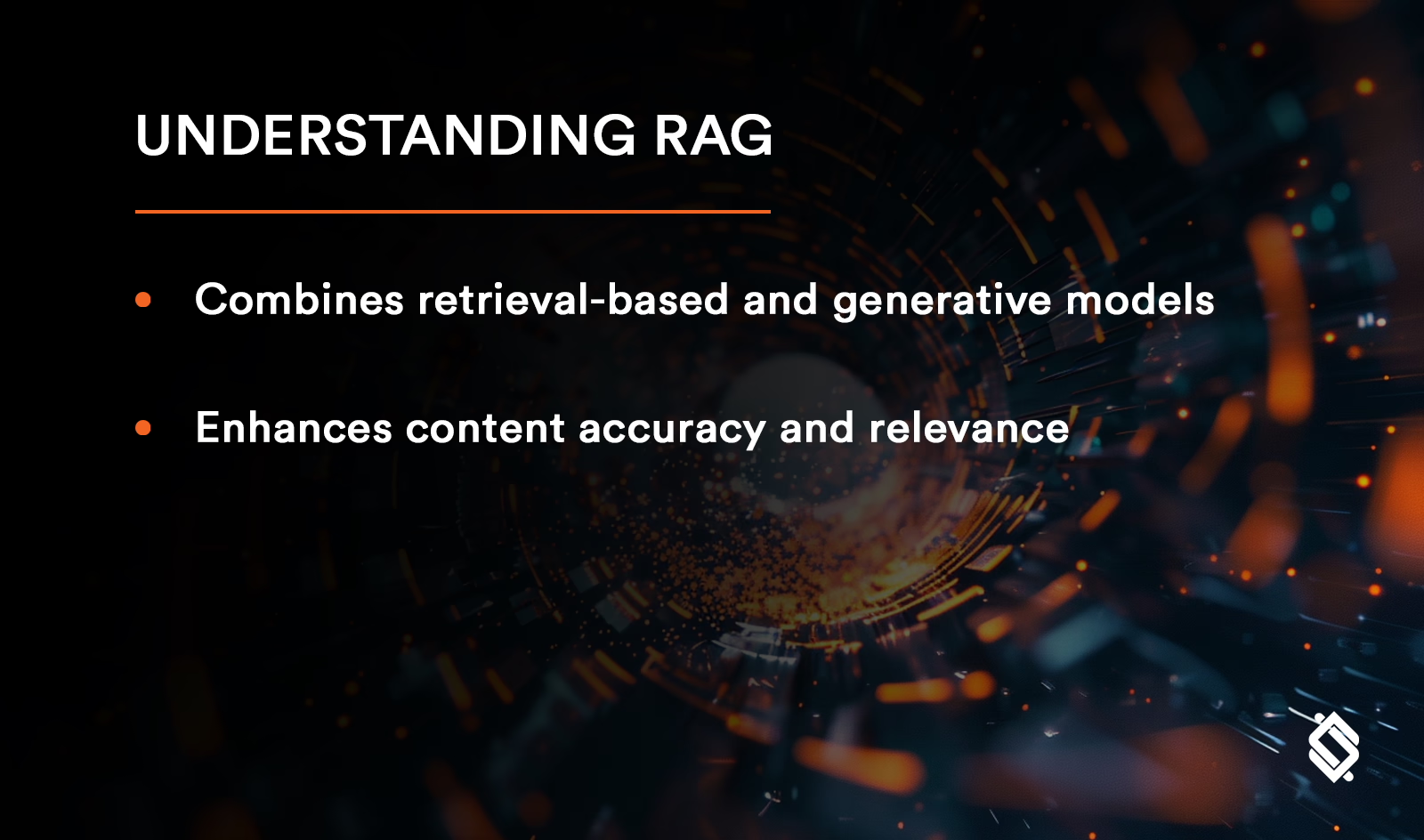
![]()
Retrieval-Augmented Generation (RAG) is a hybrid approach that leverages both retrieval-based models and generative models to create more accurate and contextually relevant content. Here’s a brief breakdown of its components:
1. Retrieval-Based Models
These models fetch relevant information from a predefined dataset or external knowledge base. They excel at pinpointing accurate, fact-based information from vast data repositories.
Unlocking Text Generation: The Power of Retrieval in NLG
2. Generative Models
Generative models, like GPT-3, produce new text based on input data. They are adept at understanding context and creating human-like text but sometimes lack the precision in factual accuracy.
Unleashing AI: Exploring Generative Models in RAG
RAG models effectively combine these approaches by retrieving relevant pieces of information and then generating coherent, contextually appropriate text using that information. This hybrid methodology enhances the reliability and creativity of AI-generated content.
RAG in Content Creation
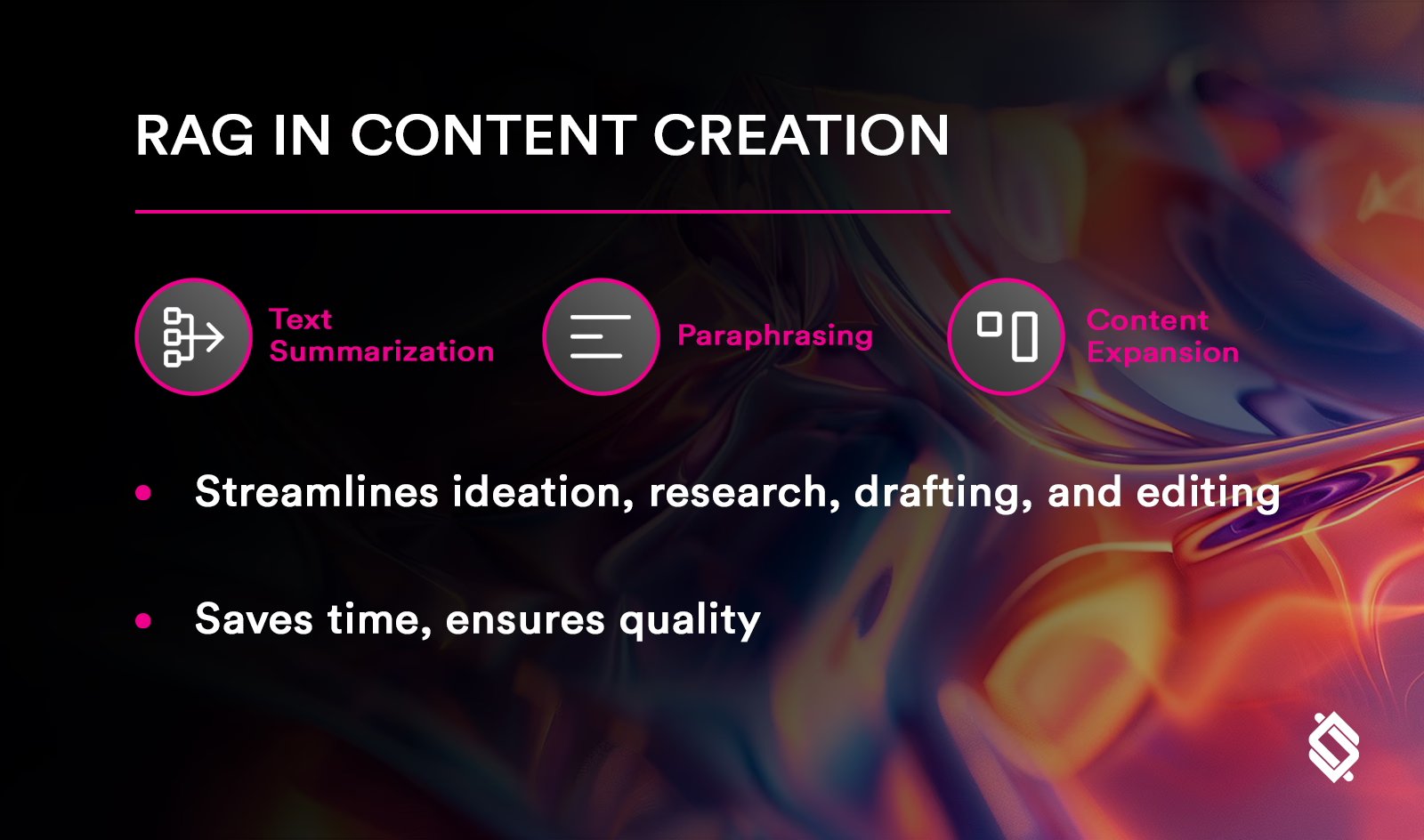
![]()
![]()
![]()
![]()
![]()
Content creation is a multifaceted process that involves ideation, research, drafting, and editing. RAG streamlines these stages by providing accurate, contextually rich content, thus saving time and effort while maintaining high-quality output.
1. Text Summarization
Text summarization is a critical task in content creation, enabling the condensation of large volumes of information into concise, readable summaries. RAG enhances this process by ensuring that the summaries are both accurate and contextually relevant.
Application
- News Aggregation: RAG can sift through numerous news articles, retrieving key points and generating coherent summaries. This is particularly useful for news platforms needing quick, reliable content delivery.
- Research Papers: For academic and scientific publications, RAG can summarize complex papers, making the core findings accessible to a broader audience without compromising on accuracy.
Benefits
- Efficiency: Automates the time-consuming process of reading and summarizing long documents.
- Accuracy: Ensures the inclusion of relevant information, minimizing the risk of missing crucial points.
- Consistency: Produces uniform summaries across various documents, maintaining a consistent tone and style.
2. Paraphrasing
Paraphrasing involves rewording content to improve clarity, avoid plagiarism, or adapt the tone to different audiences. RAG models excel in this area by understanding the context and generating varied expressions of the same idea.
Application
- Content Marketing: RAG can create multiple versions of marketing content tailored for different platforms and audiences, ensuring the message remains consistent while adjusting the tone and style.
- Academic Writing: Helps students and researchers paraphrase sources accurately, maintaining the original meaning while avoiding plagiarism.
Benefits
- Versatility: Generates multiple paraphrases, providing a range of options for content creators.
- Accuracy: Maintains the original meaning and context, ensuring the integrity of the information.
- Creativity: Introduces new ways of expressing ideas, enhancing the overall quality of the content.
3. Content Expansion
Expanding content involves elaborating on a given topic to create detailed, informative articles or reports. RAG supports this by retrieving relevant data points and generating additional context and explanations.
Application
- Blog Writing: RAG can help bloggers expand on initial ideas, providing comprehensive coverage of topics by incorporating related information.
- Technical Documentation: For technology companies, RAG can generate detailed technical documents, ensuring all aspects of a product or service are thoroughly explained.
Benefits
- Depth: Adds substantial information, making content more informative and valuable to readers.
- Relevance: Ensures the expanded content is contextually relevant, enhancing its usefulness.
- Engagement: Produces engaging content that keeps readers interested and informed.
Implementing RAG in Content Strategies
![]()
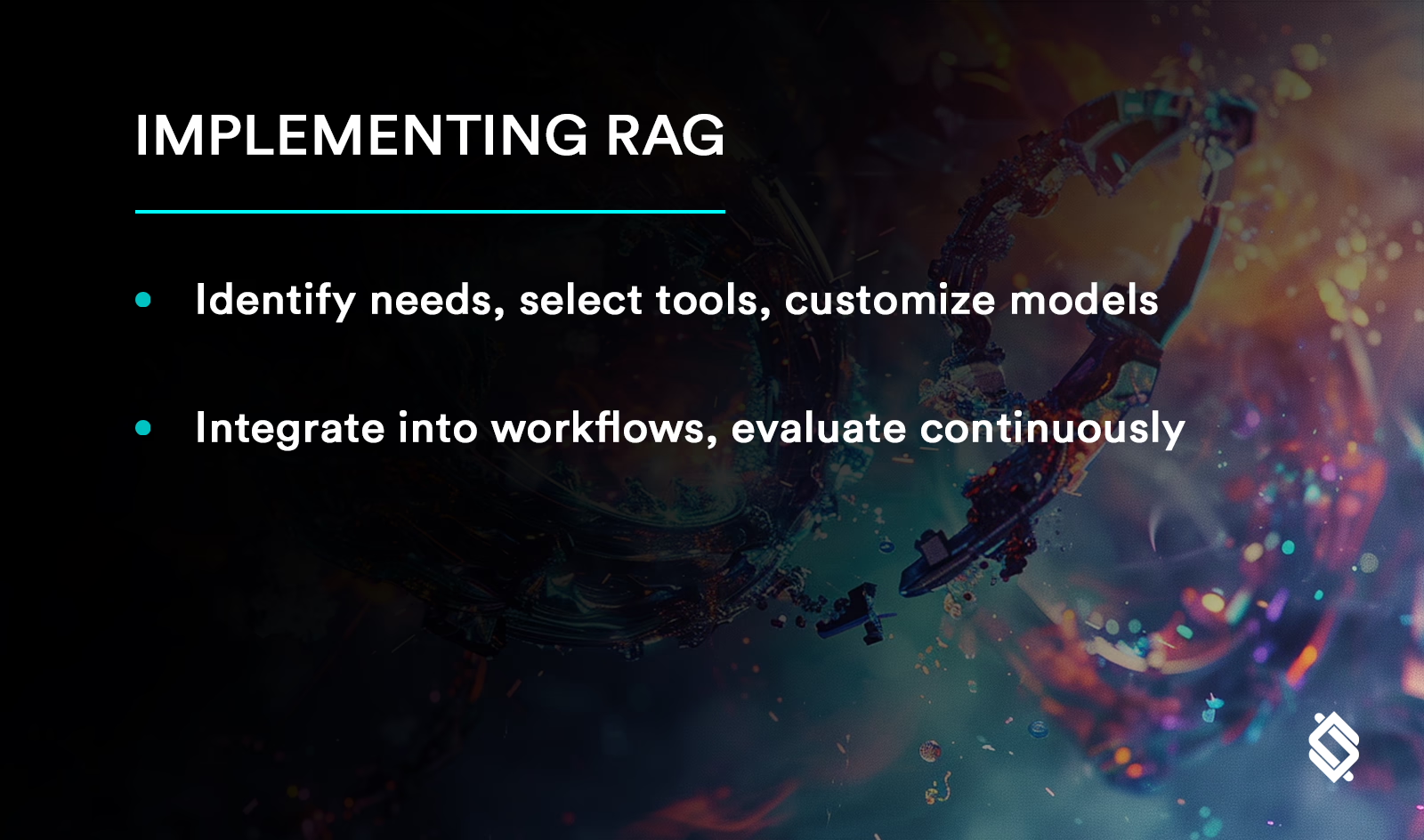
For technology company leaders looking to integrate RAG into their content strategies, several steps can facilitate successful implementation:
1. Identifying Content Needs
Assess the specific content requirements of your organization. Determine where RAG can have the most significant impact—be it in summarizing reports, creating marketing content, or expanding technical documentation.
2. Selecting the Right Tools
Choose RAG tools that align with your content goals. Several AI platforms offer RAG capabilities, each with different strengths. Evaluate these tools based on their performance, ease of integration, and scalability.
Microsoft Azure AI: a resource for selecting AI tools
3. Training and Customization
To maximize the effectiveness of RAG, customize the model to your specific industry and content needs. Training the model on your proprietary datasets can enhance its ability to generate relevant and accurate content.
4. Workflow Integration
Integrate RAG into your existing content workflows. This might involve updating your content management systems or developing new processes to incorporate AI-generated content into your publication pipelines.
5. Continuous Evaluation
Regularly assess the performance of RAG in your content creation processes. Collect feedback from your team and audience to identify areas for improvement and ensure the AI is meeting your content standards.
Case Studies: RAG in Action
![]()
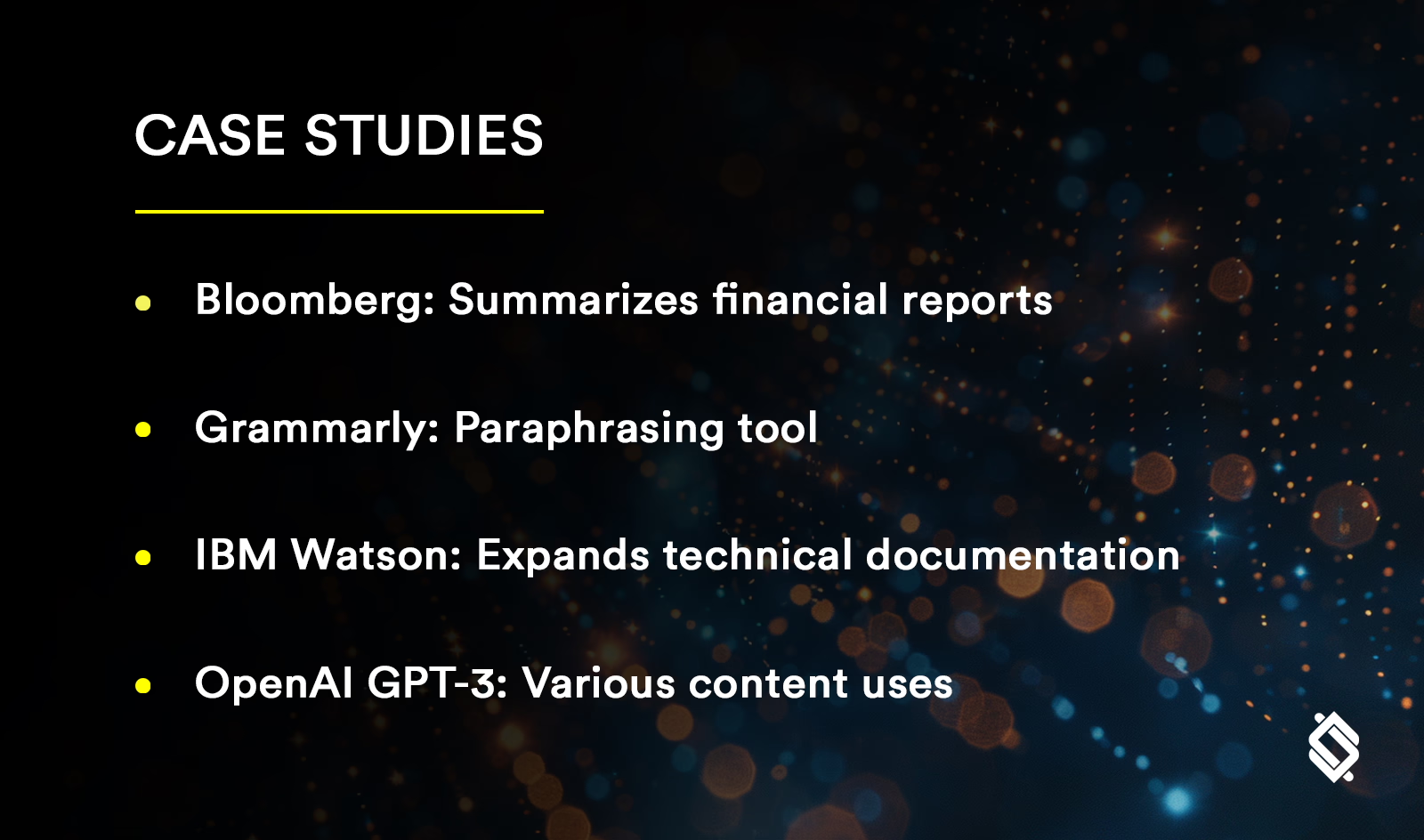
Several companies have successfully integrated RAG into their content strategies, showcasing its potential to transform content creation:
1. Bloomberg: Summarizing Financial Reports
Bloomberg, a global leader in business and financial data, uses AI-driven tools for summarizing financial reports and news. By integrating RAG models, Bloomberg can quickly generate concise summaries of financial reports and market news, allowing analysts and investors to stay informed with minimal effort. This not only enhances the speed of information dissemination but also maintains the high accuracy and reliability that Bloomberg is known for.
2. Grammarly: Enhancing Writing with Paraphrasing
Grammarly, an AI-driven writing assistant, utilizes RAG-like techniques to offer paraphrasing suggestions. By analyzing the context of a sentence, Grammarly can propose alternative ways to express the same idea, helping users improve clarity, tone, and style. This is particularly useful for content marketers and writers who need to produce varied content for different audiences and platforms.
3. IBM Watson: Expanding Technical Documentation
IBM Watson uses RAG techniques to assist in creating comprehensive technical documentation. By retrieving relevant technical data and generating detailed explanations, Watson helps companies produce in-depth manuals and guides for their products. This has been particularly beneficial in industries like healthcare and finance, where precise and thorough documentation is crucial.
4. OpenAI’s GPT-3: Content Generation for Various Industries
OpenAI’s GPT-3, while primarily a generative model, has been integrated into various applications that utilize retrieval-augmented techniques. Companies like Kira Systems use GPT-3 to analyze and summarize legal documents, making it easier for lawyers to sift through extensive legal texts. By combining retrieval and generation, these applications ensure that the summaries are both accurate and contextually relevant.
Challenges and Considerations
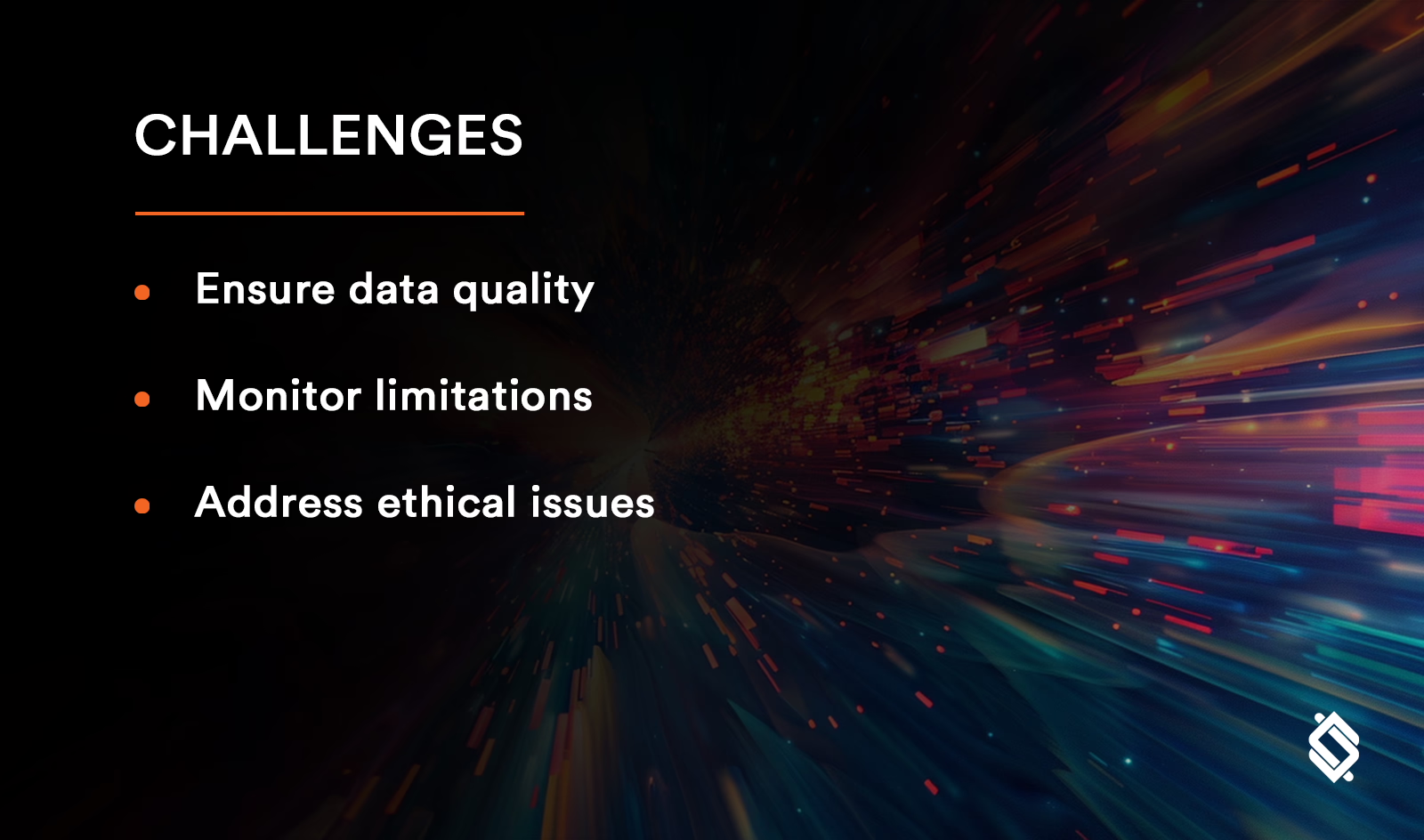
![]()
While RAG offers numerous benefits, it is essential to be aware of potential challenges:
1. Data Quality
The accuracy of RAG models depends heavily on the quality of the data they are trained on. Ensure that the datasets used are comprehensive and free from biases.
2. Model Limitations
Despite their advanced capabilities, RAG models are not infallible. They may occasionally produce inaccurate or irrelevant content. Continuous monitoring and human oversight are crucial to maintaining quality.
3. Ethical Considerations
Using AI for content creation raises ethical questions, particularly around plagiarism and originality. Establish clear guidelines and ethical standards for AI-generated content to address these concerns.
The Future of RAG in Content Creation
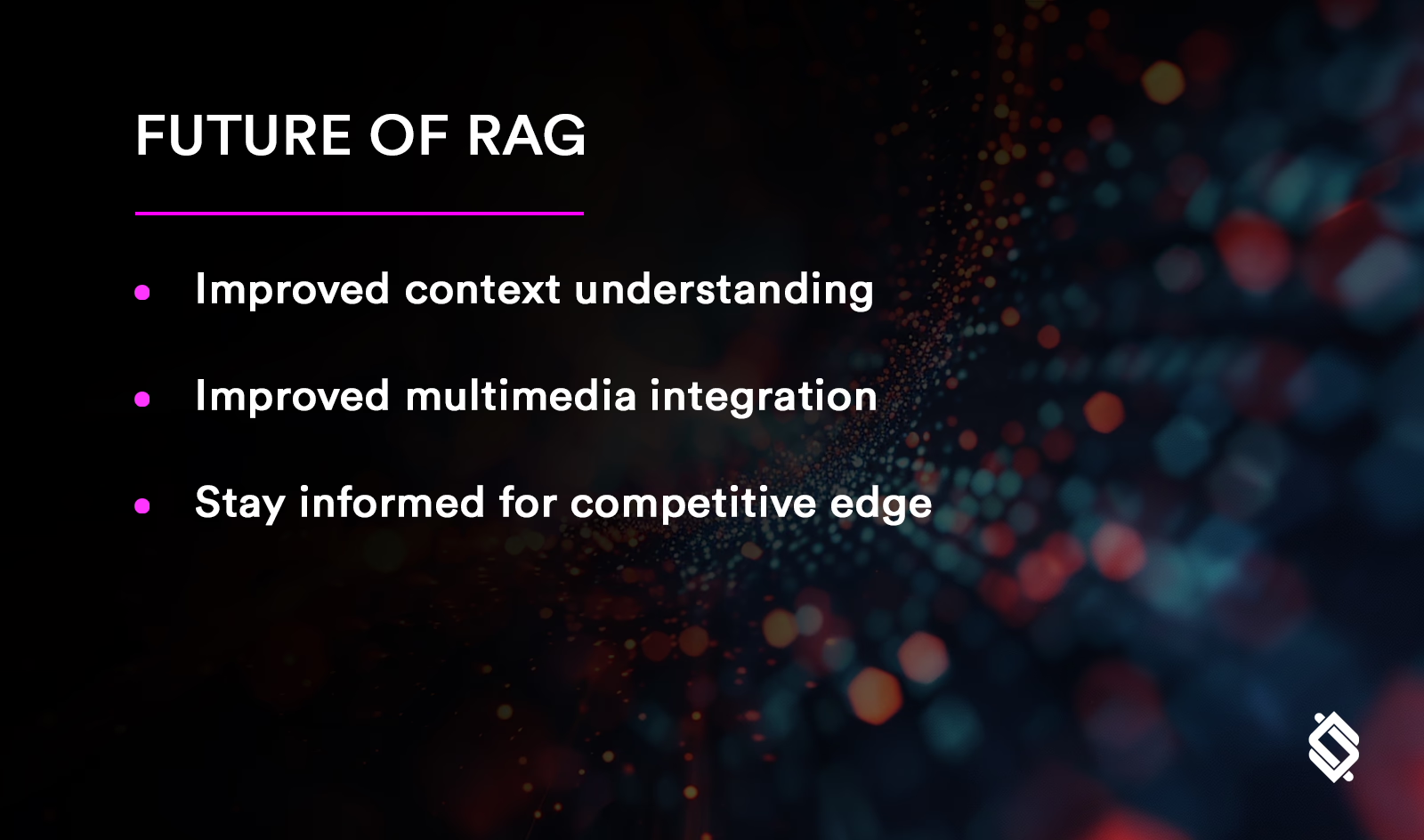
![]()
As AI technology continues to evolve, the capabilities of RAG models will only improve. Future developments may include enhanced context understanding, better integration with multimedia content, and more sophisticated handling of diverse content types. By staying informed about these advancements, technology company leaders can leverage RAG to maintain a competitive edge in content creation.
Conclusion
![]()

Embracing Data & AI, particularly through the use of RAG models, presents a transformative opportunity for technology companies. RAG enhances content creation by providing accurate summarizations, versatile paraphrasing, and detailed content expansion. By integrating RAG into their content strategies, companies can improve efficiency, consistency, and engagement, ultimately driving growth and innovation.
As the digital landscape continues to evolve, the adoption of advanced AI techniques like RAG will be crucial for companies looking to stay ahead. By understanding and leveraging the power of RAG, technology company leaders can unlock new potential in their content creation efforts, setting the stage for a future of dynamic and impactful digital content.
Harvard Business Review on AI and Machine Learning



